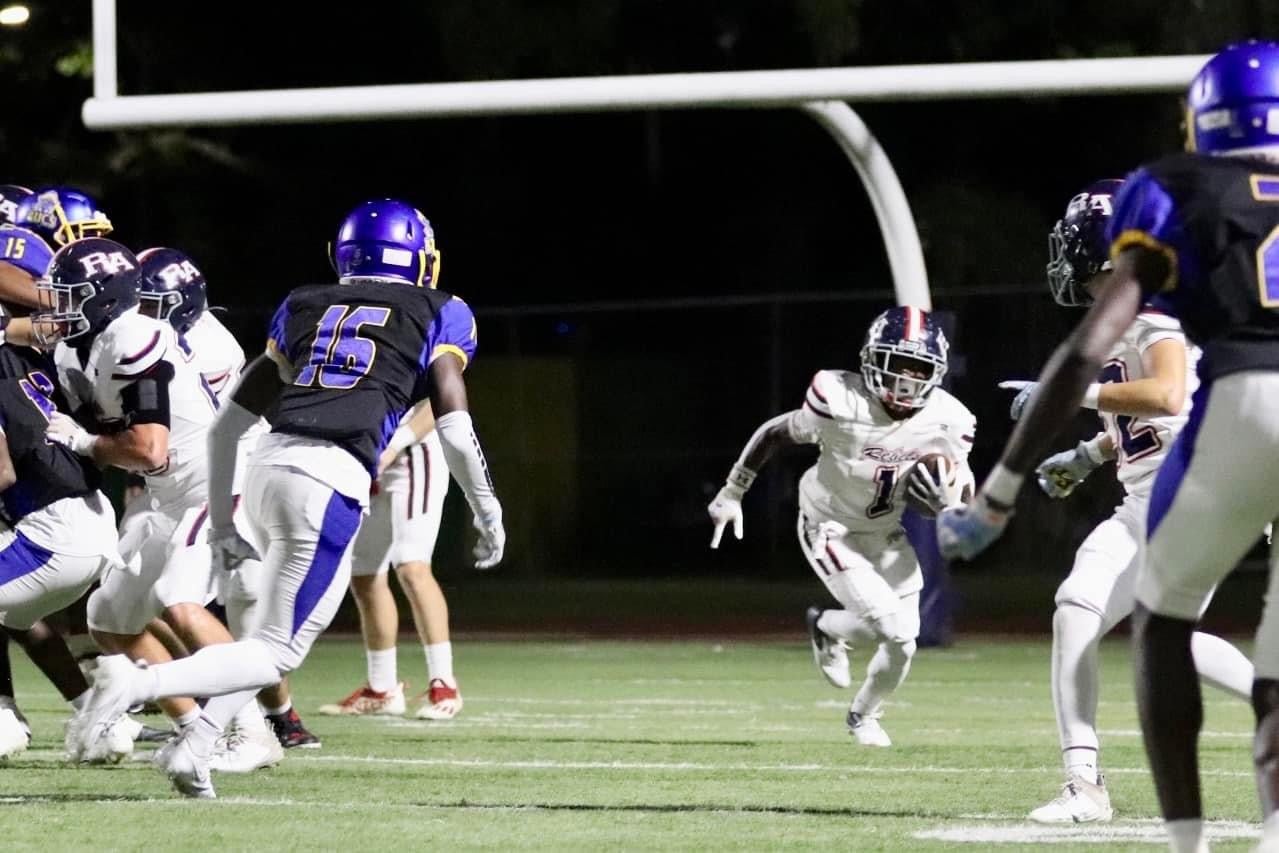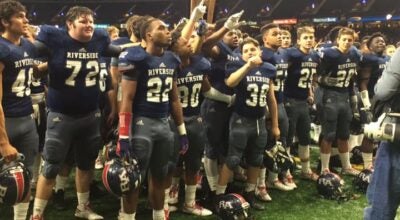Serious summer heat affects athletes
Published 12:00 am Saturday, August 4, 2001
J. EDMUND BARNES
PHOTO: Member of the St. Charles Catholic High School football team work out in the summer heat in preparation for the upcoming football season. (Staff Photo by J. Edmund Barnes) LAPLACE – It is August in Louisiana. More than any other time during the year does everyone in the state feel like moving as little as possible, choosing to remain in dark, air-conditioned rooms away from the heat. Everyone that is, except high school, college and professional football players. But despite a lengthy regime of spring and summer workouts, the first team practices the year usually see a lot of sweating and struggling players. It is the heat and the humidity of August that can literally be a killer. In the past week three football players have died, two almost certainly from heat stroke. Former St. Thomas More High School fullback and Lafayette native Eraste Autin collapsed jogging back to the locker room after a summer conditioning session. Autin, who would have been fighting for a starting position with the University of Florida Gators, died July 25. Minnesota Vikings offensive tackle Korey Stringer collapsed and died six days later. In Indiana, Travis Stowers, a Clinton Central High School football player, collapsed and died during practice. Doctors said Autin had a core temperature of 108 degrees. Stringer was also diagnosed with a temperature of more than 108 degrees. Stowers died of a brain aneurysm. At 108 degrees numerous negative things happen to the body. Mainly, the internal organs either shut down or become damaged due to the extreme heat. The uncontrolled internal heat can exacerbate a normally undetectable heart condition to the point when it can cause a heart attack or failure. Heat stroke is the most unusual form of heat illness. Yet after three high-profile incidents, medical experts stress the public needs to be made aware of how heat illness presents itself and how it can be avoided. Heat illnesses and heat strokes are preventable because all they require is proper fluid management. While working out in the heat, the body cools itself by sweating. When the body sweats it loses fluids. The earliest stages of heat illness are characterized by cramps and nausea. This is the body’s way of sending a message that fluids need to be replaced. The second stage of heat illness is heat exhaustion. The skin becomes bright red, and the person is sweating profusely. They might have an elevated heart rate and nausea. Heat stroke is a true medical emergency. At this stage of heat illness, the body’s thermal regulatory systems have broken down. There are no longer enough salts and fluids in the body to keep the temperature down. The victim’s skin is hot and dry. Seizures and unconsciousness follow. With the body unable to cool itself, the core temperature rises. The internal organs shut down in the heat, and unless the victim is aggressively cooled and hydrated, death may follow. Mark Fryou of Acadian Ambulance Service said the best treatment is prevention. “Our body tells us to take a break. Stopping the activity and hydrating is usually all thats needed,” he said. Fryou said heat cases typically occur when people work in enclosed spaces with little or no circulation or during fun activities such as sporting events. “Lots of people don’t hydrate before activities. When you are thirsty your body is telling you to drink, but you’re behind the power curve already,” he explained. Fryou also said while people are working they are more likely to take breaks, during sporting and recreational events they are less likely to listen to their bodies because they are having fun. Fryou pointed out the use of diuretics such as beer in place of sports drinks and water was one of the worst things a person could do. “People use beer to hydrate, but beer is a diuretic. It facilitates water loss. The best thing is water or some sports drinks,” he said. Tab Blackburn, the executive director of the Tulane Institute of Sports Medicine said that older people and athletes are more suceptable to heat illness. “You can be in perfectly good shape but because of heat stress there can be some underlying ailment that normal screening wouldn’t find. Normally you just don’t look for those kinds of things,” said Blackburn. “Athletes are susceptible to the environment. Evaporation is the only way to cool the body. If we can’t sweat, we can’t cool off. “(Our bodies) are producing heat as well as environmental (sources of heat).” Blackburn emphasized that heat stroke is preventable. Blackburn said athletes should have worked out during the summer to condition themselves to the heat. Two points Blackburn emphasized: 1) A medical exam is important. 2) Obese and ill athletes are more at risk, as are athletes who have had heat problems in the past. “Weighing before and after practices is important (because it indicates water loss). Pro and college athletes can get (intravenous fluids), but (usually) there is no such luxury in high school,” said Blackburn. Blackburn said good food and hydration before workouts is important, as are frequent water breaks. Blackburn said thirst is not the key. What is important is to push water, even when not thirsty. Blackburn acknowledged the difficulty athletes can have in maintaining good nutrition and hydration, but said parents share in this responsibility too. Blackburn said coaches should monitor the heat and humidity and limit practices or have the athletes wear lighter clothing if it gets too hot. Dr. Don Peterson, an emergency staff physician at the River Parishes Hospital in LaPlace, said heat exhaustion is a fairly prevalent presentation in the emergency rooms of southeast Louisiana. “Most of the stuff we see is heat illness and heat exhaustion,” said Dr. Peterson. “People are more aware of heat illness and heat exhaustion.” Dr. Peterson said heat stroke, while rare, presents suddenly and is a true medical emergency. “That’s why it’s important for people outside to replace fluids. We don’t want people to drink soft drinks,” he explained. Dr. Peterson said he could not emphasize how important is is for people to drink water. “Sports drinks are fine, but for every 10 ounces of sports drinks follow it with 20 ounces of water,” he said. “Soft drinks are not fluid replacement and won’t do the job.”





